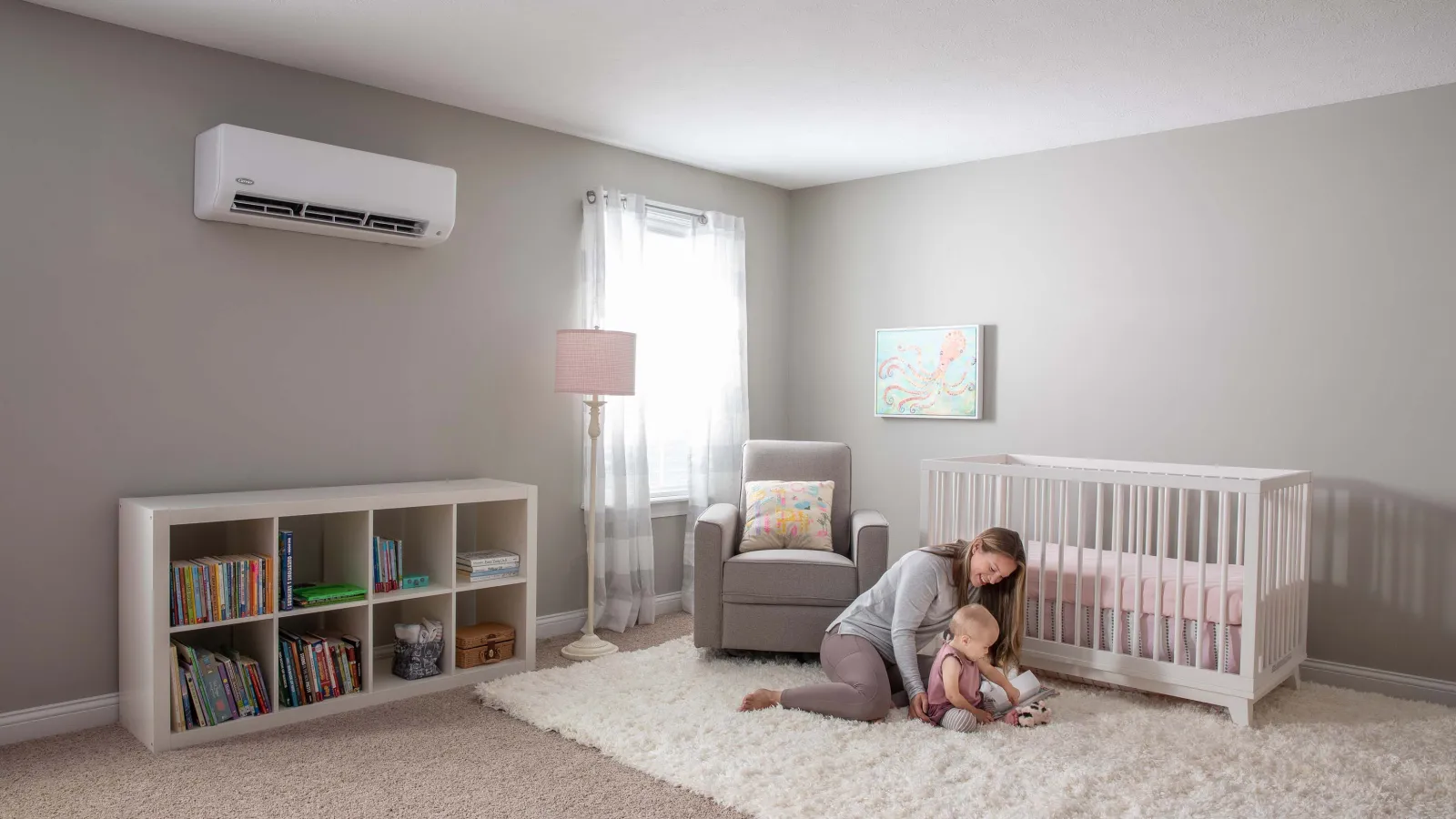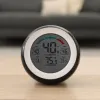Here in Georgia, spring feels a lot like summer for anybody who moves here from a more northerly latitude. Daytime highs highs can creep into the 80s, and the air often feels heavy with humidity.
If you’ve got an encapsulated crawlspace, this is the time of year you start feeling glad you have one. While typical crawlspaces get moldy, harbor pests, and reduce the efficiency of your HVAC system, encapsulated crawlspaces are dry, clean, and insulated from temperature extremes.
Dryness, in particular, distinguishes encapsulated crawlspaces from the rest. By keeping the relative humidity (RH) in your crawlspace below 60%, you effectively prevent mold growth regardless of temperature. The thing is, how you keep your crawlspace dry matters.
And using a dehumidifier is the best way.
Some encapsulated crawlspaces use the “supply air” method.
Every encapsulated crawlspace needs a drying mechanism. Our favorite is a dehumidifier (we’ll explore why in just a moment), but it’s common for contractors to dry your crawlspace using the “supply air” method.
This method involves cutting a hole in your supply plenum so that dry, conditioned air blows into the crawlspace. Typically, a contractor will insert a 4 to 6-inch duct into the hole. Many contractors like this method because it’s easy to install. Likewise, many homeowners like it because they avoid having to purchase a dedicated crawlspace dehumidifier.
In some homes, supply air may do a good job of drying out the crawlspace. Depending on the conditions, it might even work just as well as a dehumidifier.
But in other homes, the supply air method causes problems, even when it succeeds in keeping the crawlspace dry.
Why we don’t like the supply air method
Here are a few reasons we don’t use the supply air method in our encapsulated crawlspaces:
- Your crawlspace only gets dry air when the HVAC system is running. HVAC systems run according to conditions inside the home – not the crawlspace. When humidity increases in the crawlspace, your thermostat will not respond to the change in conditions.
- The supply air method might not dry out the crawlspace during shoulder seasons. To dry the crawlspace using this method, the HVAC system needs to run consistently. You might not run your AC much in spring and fall, but the crawlspace can still hold a lot of humidity during those seasons. Ultimately, your encapsulated crawlspace might still become damp and harbor mold.
- Crawlspace air might infiltrate your home. While encapsulated crawlspaces are sealed to prevent air infiltration, no air sealing job is 100% perfect. When you pressurize the crawlspace with supply air, the air being replaced has to go somewhere. Some of it will escape to the outdoors, but some of it will seep into your house. That’s not good because crawlspace air may contain contaminants, such as radon, that you don’t want to enter your home.
- The HVAC system won’t be properly balanced. Ideally, HVAC systems are designed to meet the heating and cooling needs inside a given living space. They’re not designed to also condition your crawlspace. When you cut a hole in the supply plenum, you could create an imbalance that makes certain parts of your home less comfortable.
Here’s the bottom line with the supply air method: It’s cheaper than installing a dedicated dehumidifier, and it may keep the crawlspace dry in some homes. On the other hand, it might not keep the crawlspace dry in other homes, and it can lead to poor indoor air quality or uncomfortable HVAC imbalances.
Why we like dehumidifiers in encapsulated crawlspaces
So, the supply air method has several pitfalls. But do you know what doesn’t? A dedicated dehumidifier for your encapsulated crawlspace.
Here’s why we like them:
- Dehumidifiers respond to conditions in the crawlspace. When humidity increases in the crawlspace, the dehumidifier detects the change and starts running. This is never possible with the supply air method.
- They can run even when your HVAC system isn’t running. Since the dehumidifier responds to conditions in the space where it’s located, you won’t have to worry about a wet crawlspace during the shoulder seasons.
- They don’t pressurize the crawlspace. With a dehumidifier, you don’t run the risk of additional crawlspace air infiltrating the home. The dehumidifier simply removes moisture from the air – it doesn’t exchange “old” crawlspace air for “new” air from your HVAC system.
- There’s no risk of airflow imbalance. Since you’re not changing anything about how your HVAC system operates, you don’t have to worry about new, mysterious comfort problems in your living space.
There’s just one downside to using a dedicated crawlspace humidifier instead of supply air: cost. You have to buy the dehumidifier, and you’ll probably have your encapsulation contractor install it.
But if you’re already paying to encapsulate your crawlspace, you should insist on it being done right.
A dedicated dehumidifier for the crawlspace is simply the most effective, lowest-risk method for keeping your encapsulated crawlspace dry. The supply air method is mostly a way to do an “almost as good, but not great” job for less money.
Oh, and about those crawlspace dehumidifiers: They’re different from the little dehumidifiers you buy at Home Depot. Dedicated crawlspace dehumidifiers are high-quality machines that last a long time. You won’t have to worry about them conking out after just a couple of years.
Here’s what to do if your encapsulated crawlspace uses the supply air method.
If you’re currently drying your encapsulated crawlspace with supply air, don’t panic. Just do these two things:
- Test your home for radon. The best way to do this is to hire a professional who uses commercial-grade equipment. Since you’re testing to see if the supply air method is pushing radon into your home, you might need to do the test twice: once with the AC running all the time (summer) and once with it not running very much (spring or fall).
- Monitor crawlspace humidity. For about $30, you can buy a humidity monitor (aka, a hygrometer) with a remote sensor. They sell them at hardware stores, or you can just order one online. Put the sensor in your crawlspace and keep the monitor in your home to check readings. Is supply air keeping RH in the crawlspace below 60%? If so, great! You might not need to change anything. But if RH consistently crosses the 60% threshold, it might be time for a dehumidifier.
All in all, a dehumidifier is a superior option for drying your crawlspace. However, if supply air is doing the trick and isn’t causing indoor air quality problems or HVAC imbalances, you should keep it the way it is. There’s no reason to fix what isn’t broken.
Did we mention that encapsulated crawlspaces are simply awesome? They’re mold-free, inhospitable to pests, and never too hot or too cold. You’ll be glad you have one, no matter how you keep it dry.






